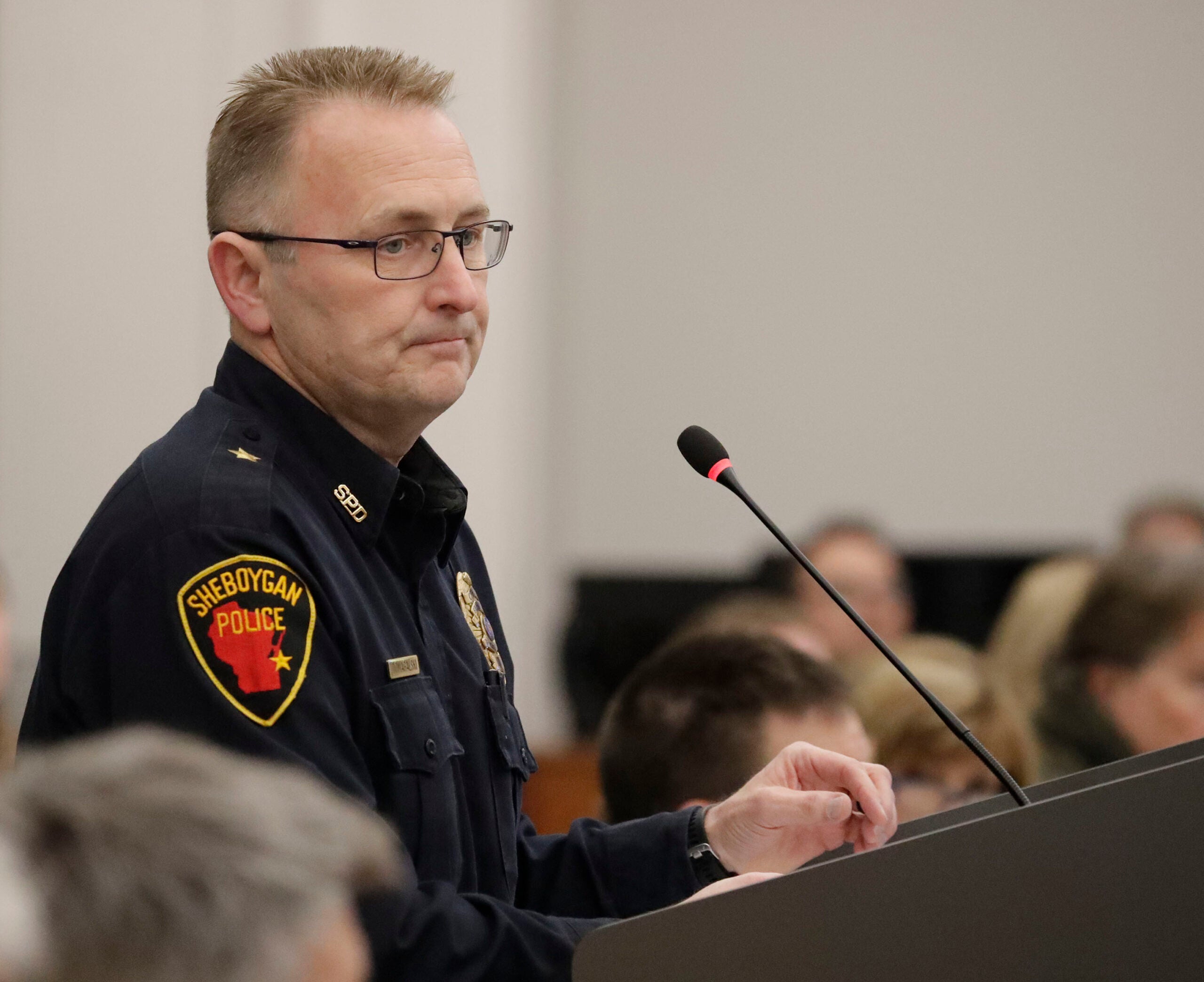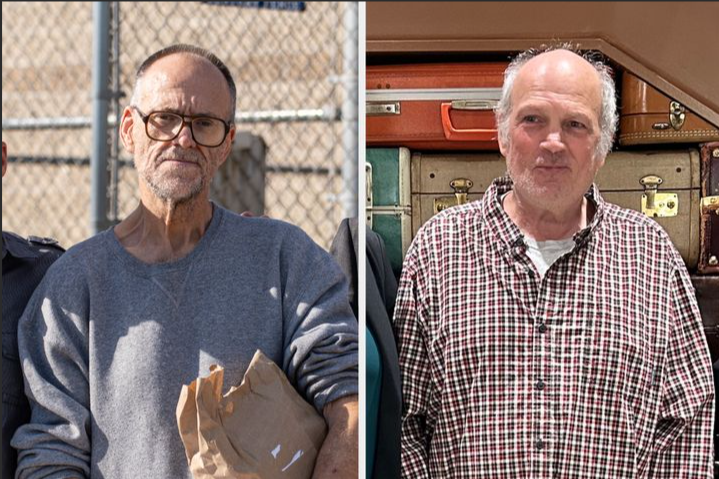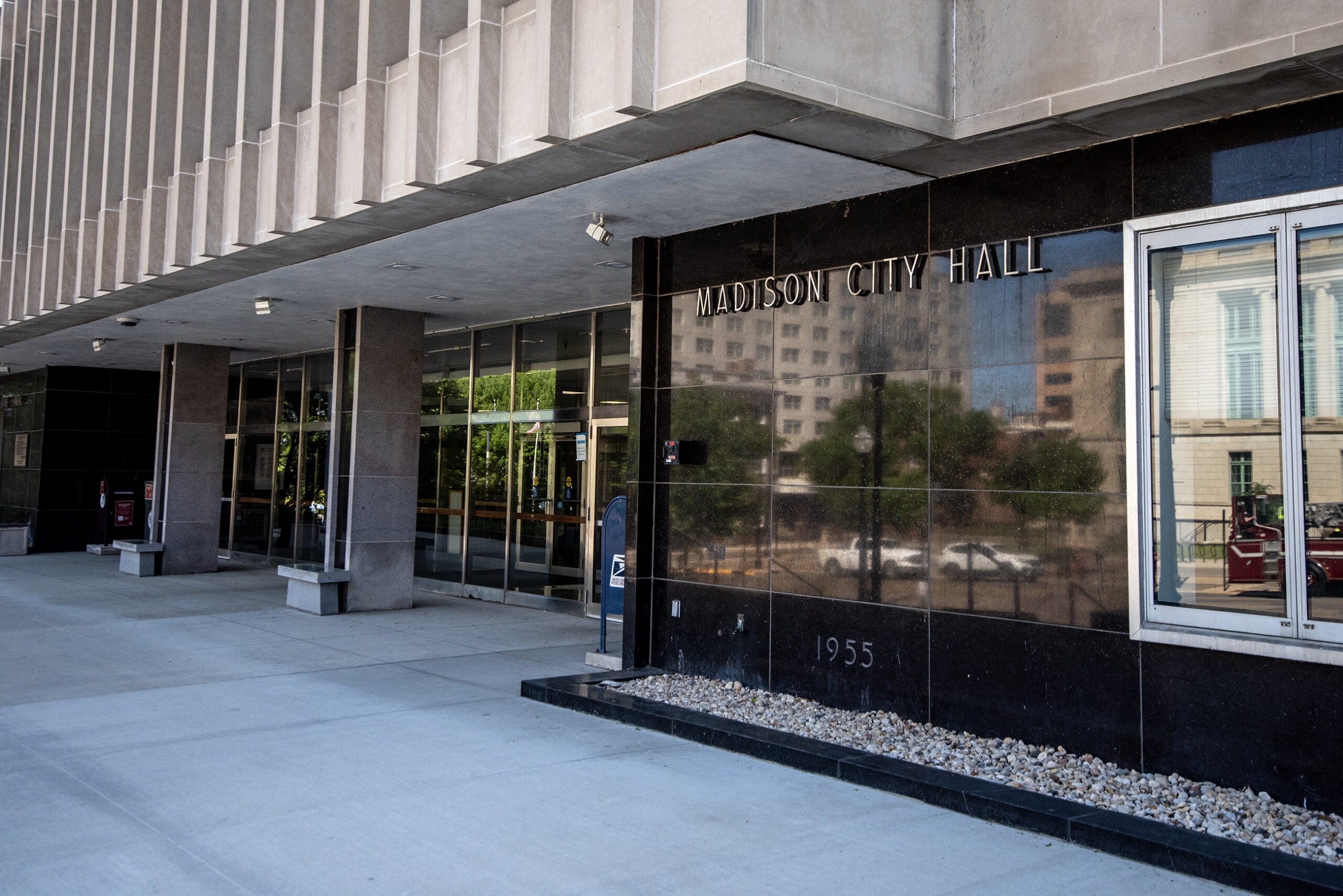In the spring and summer of 2021, the results of three, months-long internal investigations came to Sheboygan Police Chief Christopher Domagalski’s desk.
Supervisors found that, amidst a raft of sexual misconduct by both men and women in the department, four male officers had sexually harassed female colleagues. Three of those male officers also committed other serious policy violations, including not following supervisors’ orders and neglecting their duties.
One victim of harassment had resigned as a result. Another said the harassment — which included male colleagues passing around a partially nude photo of her without her knowledge or consent — was straining her relationships with other officers, and she worried about remaining at the department.
Stay informed on the latest news
Sign up for WPR’s email newsletter.
Domagalski reduced the discipline recommended by his captain, giving the worst offenders one- and two-week suspensions.
In total, 12 officers out of the 62-officer patrol force — or about one in five — were disciplined or verbally admonished in 2021 as a result of the internal investigations. At least three female officers resigned as a result of mentioning frustrations about the department.
In late 2022, Wisconsin Watch and the Sheboygan Press obtained the three internal investigations, comprising over 200 pages of heavily redacted reports.
The records name just two of the officers, Bryan Pray and Nicholas Helland, who were disciplined for sexual harassment. Police sought to shield the name of the officer central to the third sexual harassment investigation, but a redaction error identifies him as Stephen Schnabel. We chose to name him because he was also disciplined for sexual harassment.
The news outlets could not definitively confirm the identities of some of the officers disciplined for lesser policy violations. We are also not naming the victims of sexual harassment, some of whom were also disciplined for policy violations, including misuse of their cellphones and inappropriate or unbecoming conduct.
Wisconsin Watch and the Sheboygan Press’s review of the reports found the Sheboygan Police Department bungled its investigations into sexual harassment within the agency.

The department failed to protect the women who came forward, instead exposing one to retaliation. Management downplayed harassment, repeatedly coming to contradictory conclusions that protected the harassers, issuing wrist-slap discipline and at times blaming the women for their own victimization. Supervisors did not criminally investigate whether officers may have committed pornography-related crimes.
“Anytime there’s potential for unlawful conduct,” said Jim Palmer, executive director of the Wisconsin Professional Police Association, “it’s very common for agencies to call in another outside agency.”
That did not happen.
As a result, the public, and some local officials, remained in the dark. The then-city human resources director, who should have been well-informed of female officers’ complaints per city policy, alleged a “cover up” when she later learned their full extent.
Sheboygan County District Attorney Joel Urmanski learned from an outside whistleblower that officers had potentially lied to investigators — information he’s constitutionally required to disclose in cases where they testify in court. The chief claimed no such problem existed and said he did not believe Pray gave false statements during the investigation; Urmanski found the opposite. On Jan. 11, he added Pray to a list of law enforcement agents with documented credibility issues and began informing defense attorneys, allowing them to challenge Pray’s reliability. Urmanski is still weighing whether to list additional officers.
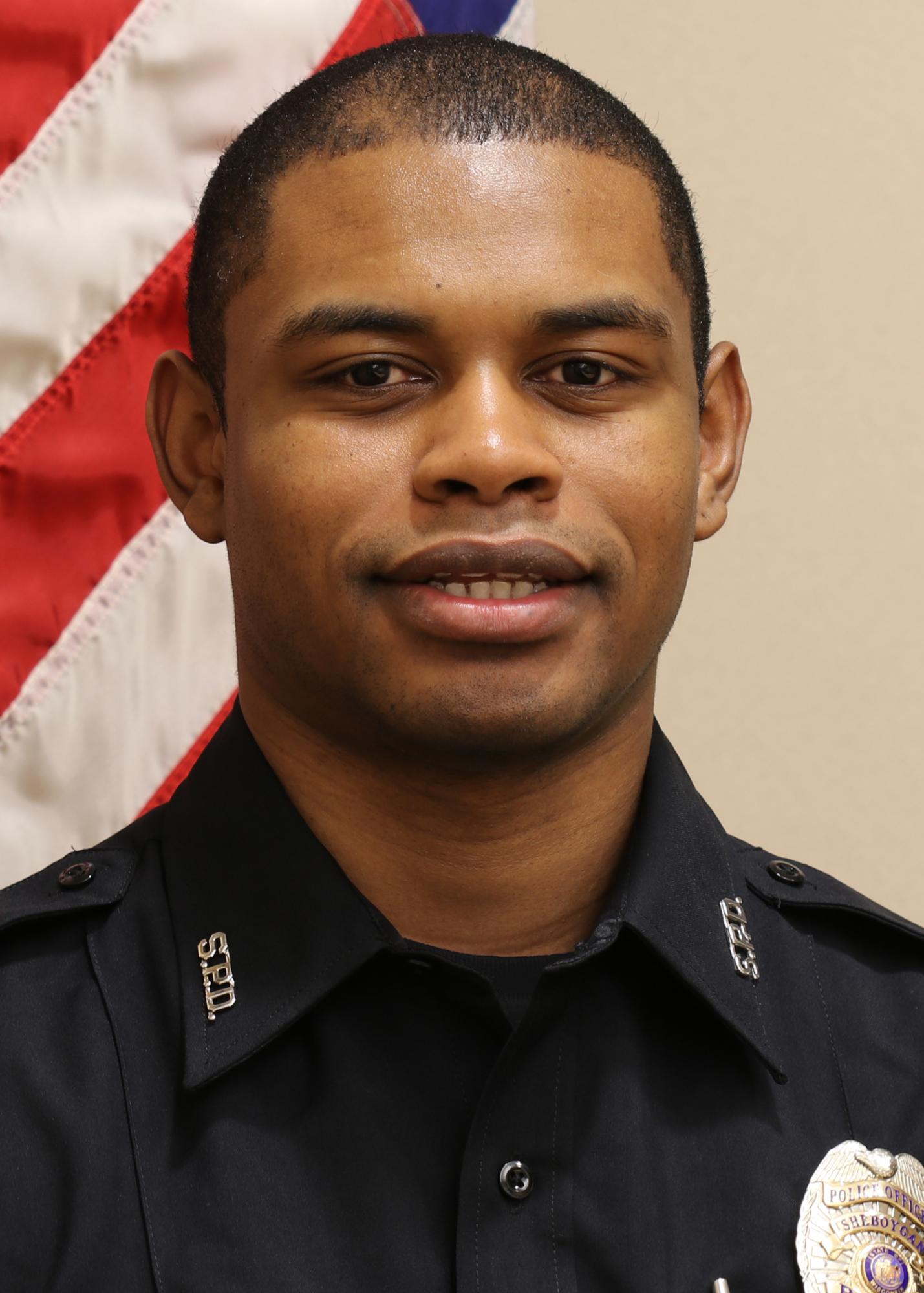
And Sheboygan city leaders did not hold the police accountable: They initially decided to hire outside attorneys to ensure the department properly addressed harassment complaints but discontinued the review after a female police officer filed a discrimination complaint against the city with the state Department of Workforce Development’s Equal Rights Division. In August, Sheboygan quietly settled the case for $110,000. The city denied any wrongdoing or liability in connection with the settlement.
Police leaders evidently worried about the officers’ conduct becoming public, noting in several discipline forms: “The impact your decisions have on the reputation of the department and community trust if the public became aware of your conduct can not be overstated as our reputation is key to the trust that the public places in us.”
People were held accountable, chief says
Domagalski, who became chief in 2010 after 18 years with the Milwaukee Police Department, said his department took the harassment complaints very seriously and held offending officers accountable.
He said the department has made a lot of progress in building a culture that will make women comfortable at work, adding: “It’s something that we need to continue to improve upon.”
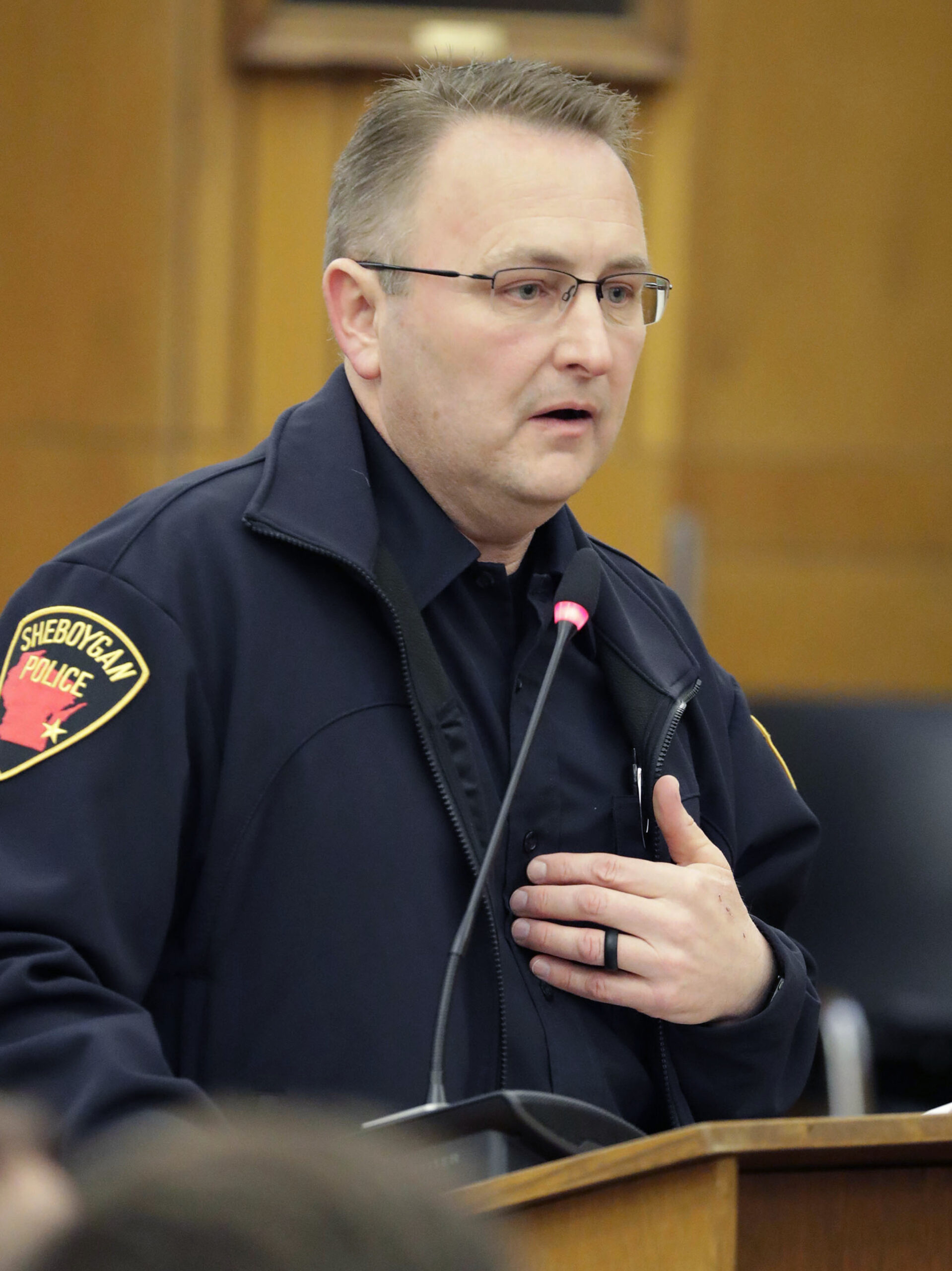
Women make up around one-sixth of the department’s officers, according to his estimates.
“This was a small group of people within the organization, and not the entire organization, that is engaged in this behavior (of sexual misconduct),” Domgalski said.
“I think it’s some of the same behavior that you find going on in our society right now, quite frequently, unfortunately,” Domagalski said. “Unfortunately, as much as we would like to be at times, we’re not immune to that. … We’re hiring from the community and we’re hiring from the human race.”
Nationally, an estimated 71 percent of women and 41 percent of men working as police officers reported experiencing sexual harassment or assault on the job. Research shows sexual harassment disrupts victims’ career trajectories and increases financial strain.
Partially nude photos led to sexual harassment
Two female officers filed complaints in January 2021 that partially nude photographs of themselves were circulating through the department without their consent. The investigations substantiated this and other sexual harassment, along with other forms of misconduct.
While off duty, a woman identified as Officer 1 sent a partially nude photo of herself to another officer no longer employed in Sheboygan, after he asked for photos of her several times, she said. But, without her consent, he showed the photo to Officer Helland while on duty. Helland then took a photo of it with his own phone and proceeded to show other male officers while on duty.
Officer 1 did not respond to a request for comment. Helland declined, citing departmental policy.
The investigation found Helland, then an officer in Sheboygan for three and a half years with no relevant discipline history, guilty of sexual harassment and other misconduct. Domagalski gave him a five-day unpaid suspension.
A woman identified as Officer 8 — who eventually left the police force and received the $110,000 settlement from the city — alleged that Pray took a partially nude photo of her without consent, which the investigation found he had shared with other officers.
Officer 8 told investigators of an incident after a 2019 training in which officers were instructed to drink heavily to practice using an instrument that measures breath alcohol levels, then continued drinking afterward. Standing in a hotel hallway, Officer 8 lifted her shirt and “flashed” Pray, at his request. Pray took a photo. When he showed her the next morning, she immediately told him to delete it. He said he would.
But instead, Pray kept the photo. The next year, he showed the image to other Sheboygan police officers while on duty, despite knowing that Officer 8 would “most definitely” feel embarrassed and demeaned as a result, the records show.
The investigation also uncovered that while off duty, Officer 8 solicited a nude photo from Pray and showed it to a friend without Pray’s consent.
In Officer 8’s internal complaint to police, she also described enduring inappropriate comments from Pray for three years since being hired, such as, “When you going to let me smash,” a euphemism for having sex. She alleged he once kissed her on the neck and held a knife to her side without consent. She described them as close friends and said she was dismissive of his sexual advances.

During the investigation, Pray immediately admitted to flirting with and making sexual comments toward Officer 8. He alleged that she never asked him to stop, although she had “more of a nonreaction” to his comments over time. Pray denied kissing her on the neck and holding a knife to her side.
Investigators determined Pray’s sexual harassment of Officer 8 and others took “many forms,” and that Pray retaliated against Officer 8 during the probe by “making negative comments” about her to others.
Investigators also determined Pray sexually harassed at least one other female officer, and he repeatedly asked for nude photos from a third. A fourth described him as flirty and very “forward and sexually explicit” toward her.
According to records of the investigation, Pray worried he might be fired. He admitted that “what he did shows a pattern” and that he “felt he could use counseling” to “work on himself.” It’s unclear whether he sought therapy. Pray declined to comment for this story.
Domagalski gave him a 10-day unpaid suspension.
Nude images sent to ‘cheer up’ Pray after killing civilian
In 2020, Pray, who had been with the department for about two and a half years, shot and killed Kevan Ruffin, a 32-year-old man with documented mental illness. Urmanski, the district attorney, deemed the deadly force justified and declined to bring charges.
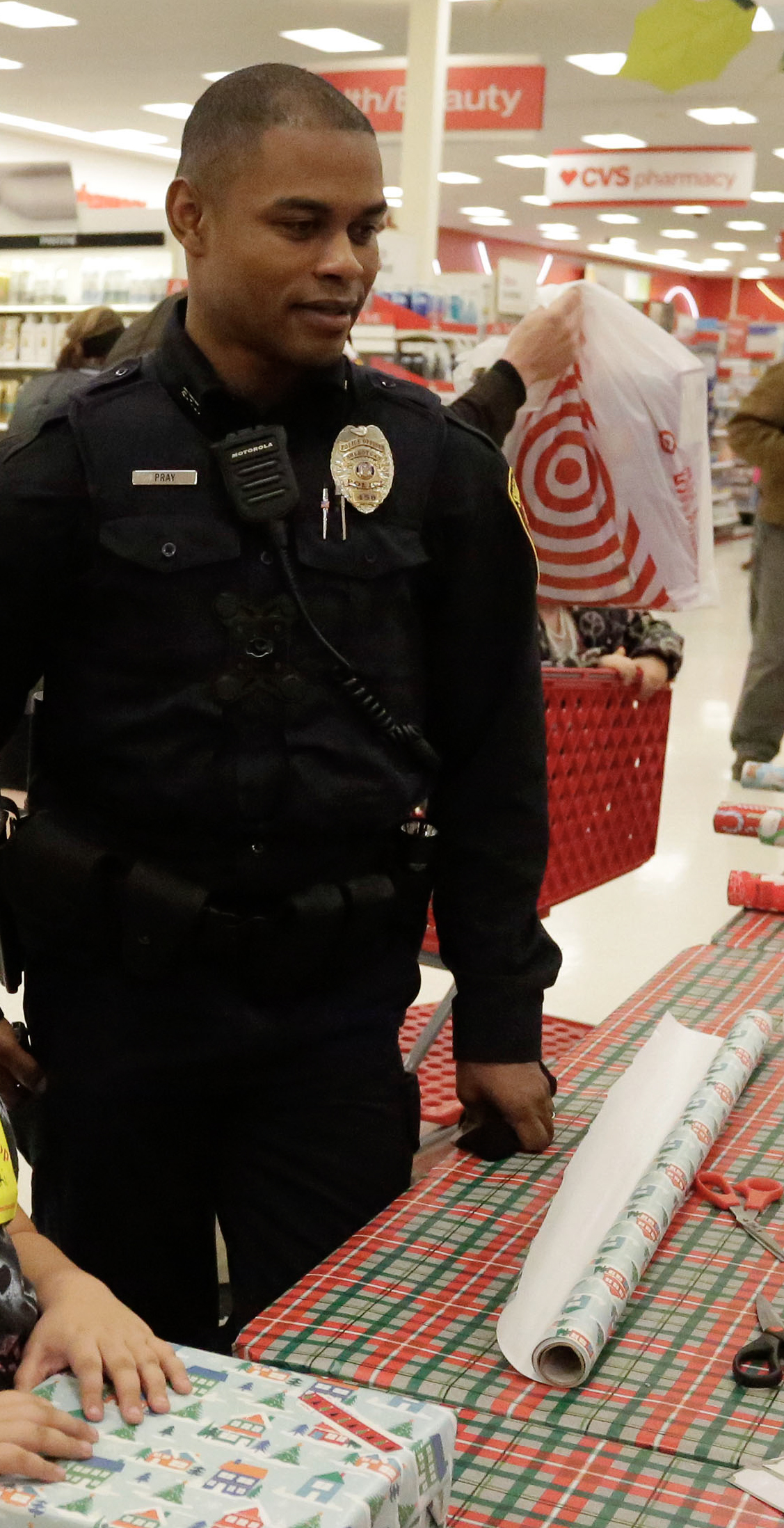
The sexual harassment investigations found that following the shooting, a female Sheboygan officer on duty, identified as Officer 11, sent Pray nude photos and videos of herself. An unnamed officer claimed to investigators Pray said she did this “to assist in cheering him up.”
“It’s hard to imagine a scenario in which anyone either in law enforcement or in the community would find that appropriate,” said Palmer, the police association head. “Officers can have a dark sense of humor — and it, frankly, is one that’s often required, because of the things they have to see on a daily basis. (But) I think that would clearly strike anyone as out of bounds.”
A captain recommended a one-day suspension for Officer 11. Instead, the chief gave her a written reprimand, revoked her phone privileges while on duty for one year and required her to attend anti-harassment training.
Pray was not found at fault for receiving the nude photographs but for showing them to other officers while on duty without her consent — a factor contributing to his overall discipline for sexual harassment.
More sexual harassment uncovered
The nude photographs led to additional harassment findings, records show.
A third male officer found guilty of sexual harassment, identified as Officer 6, viewed partially nude photos of the female officers on Pray’s and Helland’s phones while on duty. A man identified as Officer 7 engaged in similar behavior, yet was not found guilty of sexual harassment. Officer 6 received a one-day suspension; Officer 7 received a written reprimand and had to attend anti-harassment training.
The investigations found another male officer, Schnabel, solicited inappropriate relationships with female trainees. He received a written reprimand and lost his post as a training officer. Schnabel did not respond to a request for comment.
Although police have not yet provided Schnabel’s full discipline history from a public records request, the Sheboygan Press reported in 2014 he was suspended from the department for 30 days for driving with a blood alcohol content nearly three times the legal limit.
Then-city Human Resources Director Vicky Schneider thought the discipline for officers was inadequate. But Domagalski said he disciplined officers according to what he thought was best for the department, for the community and, at some point, for those individuals.
The “purpose of discipline,” Domagalski said, is to “correct or change behavior.”
The officers have since been informed how their actions negatively affected the department, community and victims. “That kind of learning experience can sometimes really make a huge difference,” Domagalski said.
No criminal investigation
Pray’s and Helland’s conduct could have triggered a criminal investigation.
State law prohibits creating and/or sharing nude images taken without consent where the person depicted had a reasonable expectation of privacy. Depending on the facts of the case, it can be a Class I felony, punishable by up to 1.5 years in prison, 2 years on extended supervision and a $10,000 fine. Officers convicted of felonies face possible decertification, which would bar them from working in law enforcement in Wisconsin.
If a member of the Sheboygan Police Department is “accused of potential criminal conduct,” the department’s policy manual states, a separate, parallel criminal investigation should occur — which the chief may request an outside law enforcement agency to handle. This did not happen, Domagalski said.
Whether a prosecutor would charge either with a crime depends on a full accounting of the facts, said University of Wisconsin clinical law professor Adam Stevenson, but he believes the circumstances warranted an investigation.
Urmanski said he reviewed the investigative reports for potential criminal conduct, but at this time, does not plan to file charges. He noted no one has asked him to do so.
In an interview, Domagalski said he does not believe the officers accused of taking or distributing nude photos had violated the law. The chief added that he believed — contrary to the findings of his investigating lieutenant — that Officer 8 did consent to be photographed.
Female complainants not protected
The investigative process that Domagalski described as “very strict” appears to have flouted best practices, documents show.
Throughout the four-month investigation, none of the accused officers was placed on administrative leave. The department’s manual indicates supervisors should place someone on leave when “a complaint of misconduct is of a serious nature,” or when “allowing the accused to continue to work would adversely affect” the department’s mission.
Most people “in any employment law setting” would consider placing the subject of such a complaint on administrative leave best practice, Palmer said.
Leave helps to “maintain the integrity of the investigation,” he explained, and to ensure that the “alleged victim’s rights aren’t further abridged in any way.”
At the very least, Palmer added, the department could have insulated Officer 8 by placing her and Pray on separate shifts, but that didn’t happen, either.
Instead, supervisors instructed Pray to limit his contact with Officer 8 to work-related matters. Officer 8 alleged in her state complaint that Pray “flaunted” that order.
Police leaders also determined Pray violated directives not to speak about the proceedings and had retaliated against Officer 8 by discussing the complaint. This, too, Palmer said, would have been a moment to place Pray on administrative leave.
Domagalski did not explain why he never placed Pray on administrative leave during the investigation, saying: “It just didn’t happen, and I’m not going to get into back and forth on individual allegations.”
Investigators also did not look at either Helland or Pray’s personal phones to ensure they deleted nude photos of female co-workers that the women did not want them to have, according to the reports.
When Helland volunteered his phone for that reason — hours after a female officer asked investigating Sgt. Alexander Jaeger to prevent a nude photo of her from circulating further — Jaeger declined to look at it, writing he “trusted (Helland) to delete any and all media on this topic.”
Pray told supervisors he would volunteer his personal phone to aid the investigation but it “wiped itself” of all data when his son unplugged the phone during an update within a month after Officer 8 filed her complaint against him.
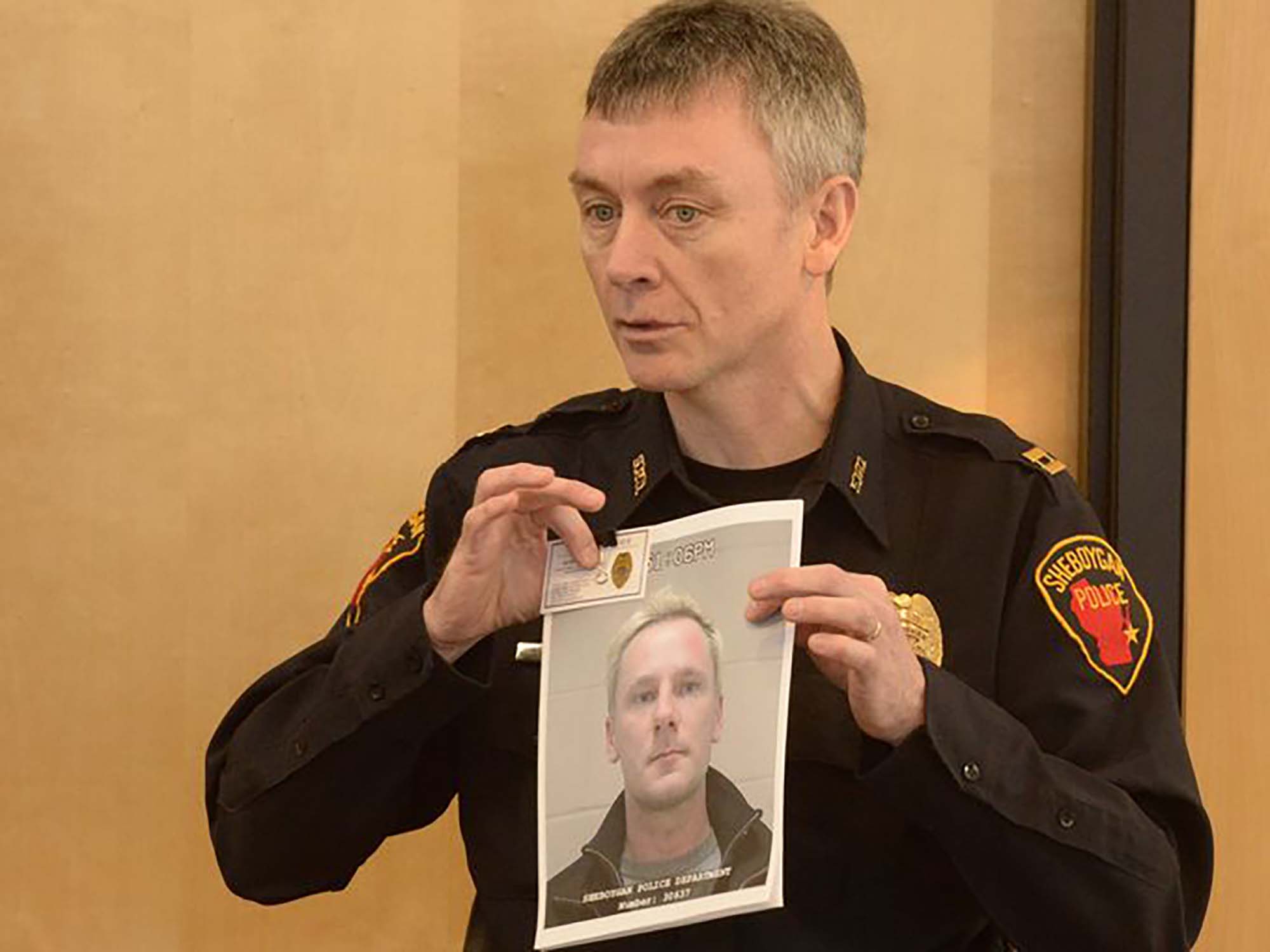
Strong findings, weakened conclusions
The captain who made the final discipline recommendations, James Veeser, weakened the investigation’s findings, a review of the internal records shows.
Lt. Doug Teunissen substantiated Officer 8’s allegation that Pray took a photograph of her exposed chest without her knowledge or consent.
“This investigation proves this actually occurred,” he wrote. “The photograph that was taken was taken without her consent, and she did not know about it until the day after this event occurred.”
Yet in Veeser’s summary, he concluded that Officer 8 “allowed” Pray “to take the photo on his phone while she lifted her shirt.”
Domagalski stood by the captain’s conclusions, saying the facts “very clearly” show Officer 8 consented to the photo.
The investigative reports contain further contradictions.
Teunissen wrote that “if at any time” Officer 8 had “made it very clear” to Pray “that his conduct was unwanted and that he needed to stop” firing would “probably be the only remedy appropriate.” He goes on to state that “this did not occur.”
Yet the record is contradictory. The reports note twice that Officer 8 “told him to stop several times.” It also says: “She did not specifically tell him to stop though later provided an example of how she told him to stop.” Elsewhere, the report concludes: “It is not disputed that (Officer 8) may have told (Pray) to stop.”
Veeser decided Officer 8’s ostensible failure to tell Pray to stop “does impact how the overall situation may be viewed.” In an interview, Domagalski agreed: “Absolutely.”
But the department’s own policy says employees, while encouraged, are not required to inform their harasser that their actions are unwelcome.
Sandra Radtke, an employment lawyer who represents sexual harassment victims, said that while it’s ideal for a person to straightforwardly tell their harasser to stop, “that’s not the reality of sex harassment victims who are often intimidated and have a variety of other reasons.”
Even if Officer 8 only tried to redirect, ignore or respond to Pray’s comments with humor, as investigators claim, it remains the case the behavior was unwelcome, Radtke said.
The legal standard for sexual harassment is “unwelcome conduct,” she explained. Unwelcomeness “can take all forms,” Radtke said, including not responding in kind or even looking at the table in embarrassment.

Officer 8: Department did not take harassment seriously
In her Equal Rights Division complaint, Officer 8 said supervisors “took no genuine interest” in her allegations, asking very few questions, ignoring information she provided and refusing to take basic steps to protect her from continued harassment.
She said “every level” of management, up to Domagalski, failed to adequately address her harassment complaint but instead “disparaged” and retaliated against her. Researchers have found this is not uncommon in discrimination complaints.
The week after first informing supervisors, Officer 8 texted Teunissen — the lieutenant leading the investigation of her allegations — that Pray was sitting beside her at roll call despite orders to limit contact with her, and it was “very uncomfortable.”
Teunissen responded, writing, “Stay positive and have a good shift.”
Officer 8 further alleged that Domagalski “literally laughed in my face” as she tried to explain continued harassment she experienced at work. She recalled Domagalski saying something to the effect of, “‘That’s just who (Pray) is. His confidence got him to where he is today.’” A witness to that conversation corroborated that the chief laughed briefly.
Domagalski said he disagrees with Officer 8’s characterization that he was dismissive of her complaint. Asked for comment, he said: “Just that I disagree with that.”
Schneider, the former city human resources director, filed her own complaint with the state Equal Rights Division in January 2022 alleging the then-city administrator Todd Wolf retaliated against her for “opposing (the) discrimination and sexual harassment” at the police department. She resigned from her position in June.
Schneider worried female officers’ sexual harassment complaints “were not being taken seriously” by the police because supervisors did not tell her the extent of the complaints, her attorney wrote in her filing. That is contrary to city policy, which states that the investigation of any complaint of harassment should be directed by the human resources director.
Schneider’s case is still pending.
The department also had “a profound lack of curiosity” about what happened to an incapacitated female officer at a hotel during a department-sponsored training, Schneider’s attorney wrote.
Redacted police reports show that after the department training, on the night Pray took a partially nude photo of Officer 8, he removed the pants of a highly intoxicated female officer lying on her hotel bed, according to another male officer who was present.
The other male officer “became uncomfortable” and left, telling Pray it was “time to go.” Pray did not leave with him, returning to the men’s bedroom five to 10 minutes later, the other officer said. The other male officer had also been drinking and the investigator indicated he could not recall all the evening’s events. The female officer — whom Schneider alleged awoke to find herself naked — told investigators she did not remember much of what happened that evening either.
If investigators asked her whether she woke up clothed or not, that was redacted from the report. Officer 8, who was also present, may have been asleep and did not remember the end of the evening, although she recalled helping the other officer take off her shirt and bra for bed after vomiting on herself.
The other male officer stated he did not feel Pray’s conduct was sexual but rather aimed at helping an inebriated colleague. The unredacted parts of supervisors’ conclusions from the investigation do not mention the incident nor does anyone appear to have been disciplined as a result.
Captain ‘addressed’ training officer’s sexual harassment with a brief conversation. Then it continued.
The investigation into Schnabel also downplayed repeat, unwelcome misconduct. Kurt Zempel, the patrol captain, found Schnabel engaged in a “pattern of behavior” that “makes female employees uncomfortable,” including calling new recruits and trainees “hotties,” messaging them flirtatiously and soliciting relationships.
Zempel found that Schnabel, a training officer, sent a winking kissy emoji to one female trainee, creating a hostile work environment. But he determined it did not constitute sexual harassment because it was not “overtly sexual.” He concluded that Schnabel’s flirty messages to another trainee who clearly “did not want to continue the conversations” with him did not constitute harassment because Schnabel eventually stopped texting her.
Zempel said flirty messages with another new female employee were not harassment because she invited him on a hike, which, Zempel wrote, indicated the messages “were not unwelcome.” These determinations came after supervisors concluded that Schnabel did, in fact, harass a fourth female trainee through similar, more overtly sexual behavior.

Schnabel’s harassment of the fourth female trainee “was already addressed” by “counseling” he received months earlier, Zempel wrote. The investigation documents only a brief conversation between Zempel and Schnabel in which Schnabel “assured (Zempel) that he could be trusted to train female officers.” But Zempel noted that Schnabel’s “pattern” of soliciting inappropriate relationships and flirting with female trainees continued after that discussion.
Although Zempel admitted that Schnabel’s behavior “exposes the department to considerable liability when facing a formal sexual harassment complaint,” he determined that Schnabel’s other behavior did not constitute sexual harassment.
At the end of the investigation, Domagalski demoted Schnabel from training officer and agreed to a written reprimand, as Zempel recommended. Zempel wrote that he believed this would mitigate the department’s liability and “correct” Schnabel’s behavior.
Female officers blamed for victimization
Although the investigations showed both male and female Sheboygan police officers misused their personal phones while on duty, supervisors only stripped the women of their phone privileges.
Records show that Veeser and Teunissen required three female officers — Officers 1, 9 and 11 — to keep their personal cell phones in their department lockers while on duty for periods of time ranging from six weeks to one year, even though Officer 1 did not violate the department’s cell phone policy. None of the male officers, four of whom violated the cell phone policy, had his phone privileges restricted.
When asked to explain the discrepancy, Domagalski wrote by email: “Phone suspensions were modified and all officers were issued department phones.” He did not respond to requests for clarification.
Domagalski also overruled his captain’s recommendations that Pray and Helland attend anti-harassment training, while two female officers — who did not violate sexual harassment policy — had to attend an anti-harassment session, records show.
The disparate punishment crystallizes dynamics at play throughout the investigative reports: Police supervisors in some cases blamed the women who experienced sexual harassment for their own victimization.
Writing in her state discrimination complaint, Officer 8 alleged that her first interview “was more focused on discounting or disregarding my claims, and trying to disparage me, than on investigating the facts and circumstances.”
She was also repeatedly questioned about a rumor she and Pray had sexual contact, which she denied.
During the investigation, supervisors also equated off-duty conduct by Officer 8 with Pray’s harassment. While off duty, Officer 8 solicited a nude photo from Pray and showed it to a friend without Pray’s consent.
“This in effect was the same action that Pray did with Officer 8 but that he showed the photo to co-workers while on duty (it is understood he lied to Officer 8),” Veeser wrote. “There is no excuse for his actions but Officer 8 did something similar.”
Women experiencing harassment are routinely shamed or blamed for their victimization, research shows. They often experience discrimination and retaliation.
“This ‘she was asking for it’ is always going to be out there to some degree,” said Radtke, the employment attorney. “That’s why a lot of sexual harassment victims won’t come forward.”
This is a collaboration by the Sheboygan Press and the nonprofit Wisconsin Watch, (www.WisconsinWatch.org), which collaborates with WPR, PBS Wisconsin, other news media and the University of Wisconsin-Madison School of Journalism and Mass Communication. All works created, published, posted or disseminated by Wisconsin Watch do not necessarily reflect the views or opinions of UW-Madison or any of its affiliates.
